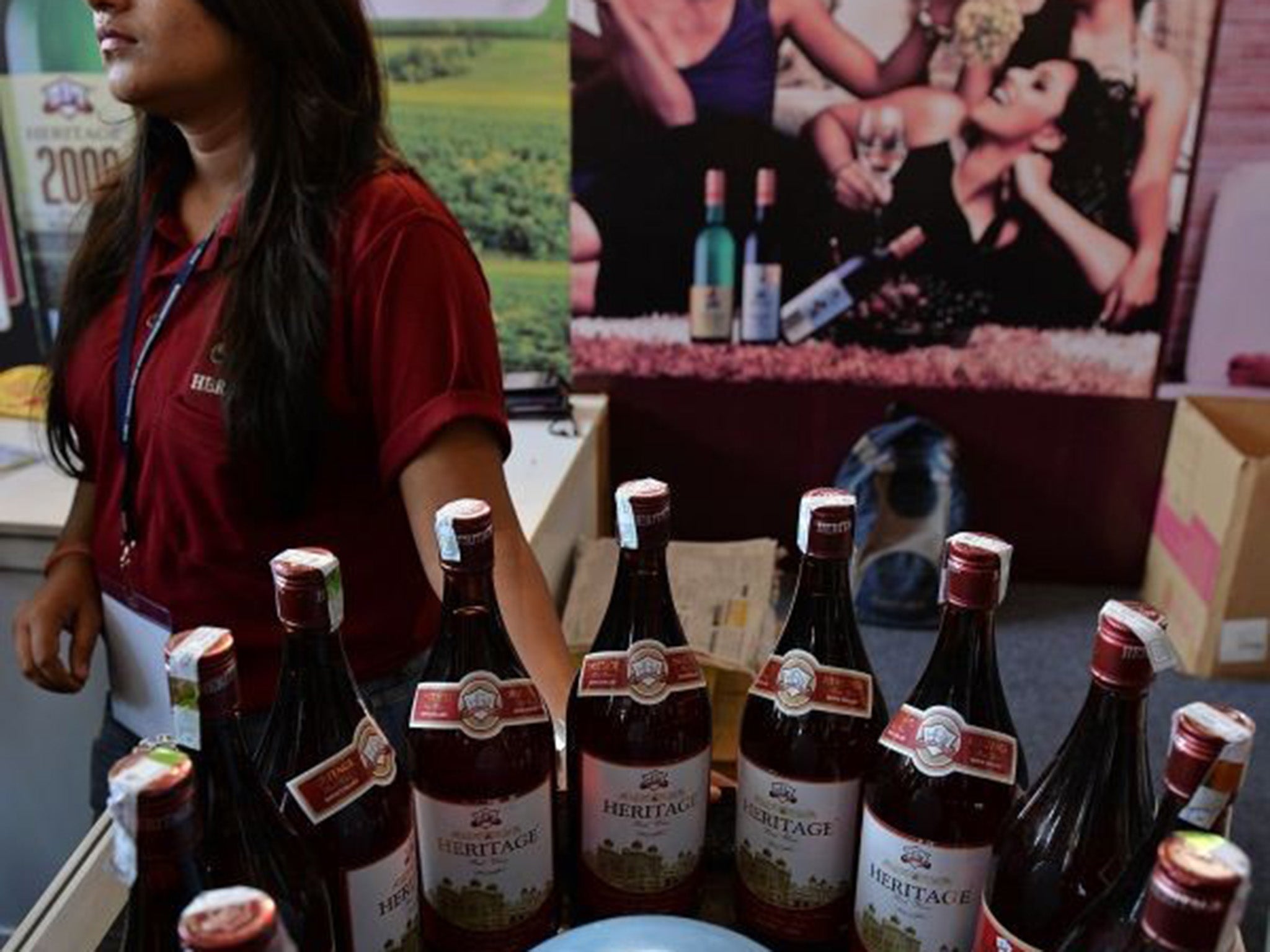Winemakers lick their lips as Indians develop their palates
...but it takes a special kind of bottle to complement a curry. Leila Nathoo enters the Sula Vineyards tasting room

It is barely midday but Swapnil Sankhe is already onto his fifth glass of wine.
From behind the bar in a concrete-walled room dotted with low-hanging lights, the effusive sommelier gives the go-ahead and Mr Sankhe swills around a large goblet of red, pokes his nose in and takes a sip.
“I’m getting a mix of fruit plus some wood flavour,” Mr Sankhe says of an open barrel 2013 Shiraz. The self-confessed wine novice, inspired to learn more by a recent trip to Europe, is among millions of increasingly affluent Indians developing a taste for the tipple who are fuelling a boom in the domestic wine industry.
In the tasting room at the Sula Vineyards, home of India’s leading wine-maker in the southern grape-growing region of Nashik, the crowd is curious, well-off and worldly.
“We want her to become a global citizen, we want her to try everything,” says Mr Sankhe pointing to his 10-year-old daughter Gargi, who is brimming with excitement at having been allowed to sample a fruity Riesling and a crisp Brut Rose.
Sales of wine in India shot up by 75 per cent between 2009 and 2014 to 24 million litres, according to figures compiled by research group Euromonitor International. The industry, valued at almost £200 million, is projected to continue grow at a healthy 15 per cent each year.
Driving the growth are increasing numbers of urban young professionals, especially women, with disposable incomes and an expanding choice of watering holes springing up across India’s major cities of Delhi, Mumbai and Bangalore.
Millions of upwardly-mobile young people are now forming their drinking habits with wine in the mix, unlike a decade ago when their only real choice was between local beer and cheap, low-quality spirits.
The ten best wine glasses
Show all 10Of the 1.2 billion majority-Hindu population, most are not prohibited by their religion from drinking alcohol, although cultural taboos persist, especially amongst the older generation and outside metropolitan areas. A handful of states ban alcohol entirely and there are regular ‘dry days’ coinciding with public holidays across the country.
Bottles of basic Indian-made red or white wine now sell for as little as 150 Rupees (around £1.50), depending on the state, although most people buy varieties for between 300 and 500 Rupees (£3-£5). Despite taxes hugely inflating the cost of drinking in bars or restaurants, Indians are generally embracing wine as a sophisticated treat, to be enjoyed occasionally in the right setting.
Producers are working on developing wines to match different Indian dishes, to encourage the habit of drinking with a meal. “Complex wine does not work with complex food, we have to design wine that suits the Indian pallet,” says Jagdish Holkar from the All India Wine Producer Association.
Indian wine for Indian people may be the trend at the moment - exports still constitute only a fraction of total production and sky-high duty on imported wines mean they are out of reach for all but the wealthiest citizens. But things are changing in this respect too - Sula wines, for example, can now be found in Marks & Spencer shops in the UK.
The Wine Society of India, which offers an education on foreign wines through masterclasses and tastings, says in the last two years, it has seen a 50 per cent increase in active members, to 10,000 enthusiasts. However, there is certainly some snobbery towards the quality of Indian wine among elites, who consider expensive ‘Old World’ wines to be premium products.
“The audience we speak to want to be different and unique. If we talk about Indian wine, they would be indistinguishable from the crowd,” says Priya Gandhi, the Wine Society’s commercial director.
Rajeev Samant, Chief Executive of Sula Vineyards says his company, with its logo of a moustachioed sun, has never shied away from promoting its origins, with the aim of making wine more accessible to an unfamiliar audience.
“Vodka has gone out. Wine is in,” says Aniket Gulabi, 28, a trendy IT worker who has joined his friends on a road trip to the vineyards in Nashik, around 100 miles north-east of Mumbai.
Tours of their expansive Nashik site, with a step-by-step guide to the wine-making process, cost an affordable 350 Rupees a person and are a key means of raising awareness, attracting more than 200,000 visitors last year.
“The numbers are so huge [in India]…If even one per cent of the population become regular wine drinkers, we won’t be able to keep up,” says Mr Samant.
Sitting on a balcony with sweeping views across neat rows of grape-vines, Ankita Bajpai, a 25-year-old banker from the northern state of Uttar Pradesh, has just tried wine for the first time.
“It’s awesome - very fruity,” she says.
Spending the day at the vineyard as part of a long-weekend visiting friends in the South, she doesn’t believe she has adopted foreign habits.
“The inspiration is from Western countries but the experience is Indian,” she says.
Subscribe to Independent Premium to bookmark this article
Want to bookmark your favourite articles and stories to read or reference later? Start your Independent Premium subscription today.

Join our commenting forum
Join thought-provoking conversations, follow other Independent readers and see their replies